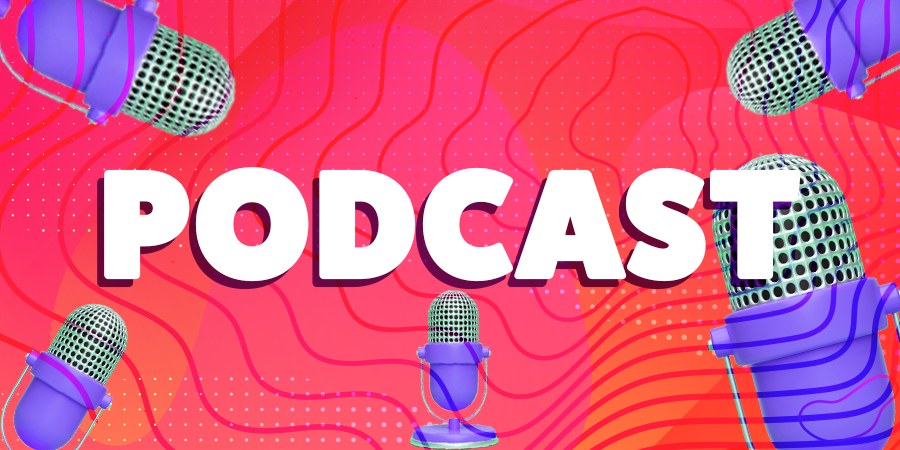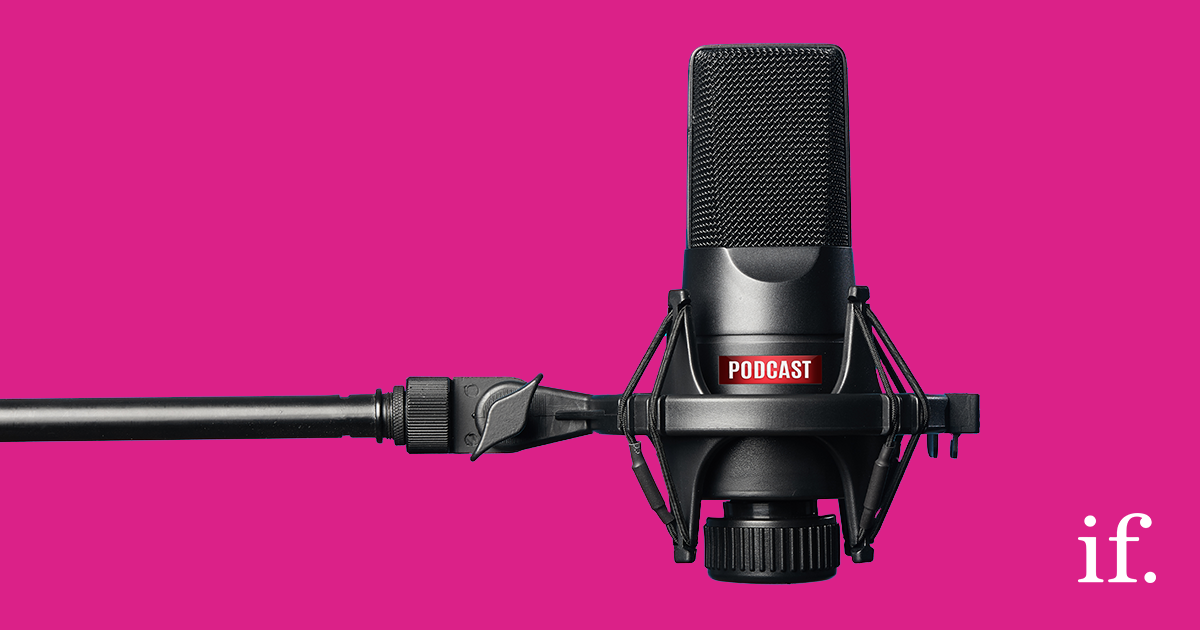Ep 8: Serious Social – The content that rocks vs the content you should drop
If you’re still using overly posed shutterstock images, we’re here to tell you, you need to break the social boring.
Please, please, please stop using boring photography, go have some fun, be bold enough to do things differently and go and do things that industry hasn’t done before.
If you’re after more know-how to break the social boring, subscribe now.
Full Transcript
Welcome to the Serious Social podcast, created by the straight-talking social media experts at immediate future.
If you’re still using overly posed shutterstock images, we’re here to tell you, you need to break the social boring. This episode was recorded live on Facebook, on Thursday 7th May 2020.
CJ –
Today we’re taking a closer look at content, specifically the content that rocks are more importantly that content you should drop – why is it important? Well let’s start with a few key elements.
Social media is noisy opportunity if you don’t stand out you’ll drown among a distracting noise and right now, thanks to Covid-19 a home working elevated social media news jumped by staggering quarter, would you believe, social media is louder than ever. Some of you are saying well okay it’s so noisy why should we play in it? Well, simple because very few brands and agencies realise it doesn’t take much to truly stand out on social and when you stand out you pause thumbs, the scrolling stops attention is garnered, and that attention is much needed at the moment with the economy the way it is and the limiting channels that we have access to because of the ongoing Covid-19 social media is and more than ever super important to brands, but many brands are getting it wrong. Now at immediate future we believe in giving back and helping and to prove that we’re gonna pay it forward we’ll look at two specific examples to help you all realise the importance of good content, why it’s key to understand some insightful data and how that triggers better and more impactful content. I promise whatever the industry you work in, the examples I’m about to talk to you about, they will resonate you’ll understand some fundamentals and hopefully it will make you go and do better content creation. I’m going to look at a B2B example, and I’m going to look at the B2C example.
Well let’s start with B2B, I’ve chosen technology, why? Well that the risk of upsetting a few people, potentially raising some eyebrows with some of our clients, it’s supposedly one of the more boring verticals out there, isn’t it, they supposedly – stay with me – if you’re a B2B brand and you’re a technology brand using boring, traditional stock photography you are one of the casualties of boring social, you’re use of imagery is not enabling great content, simply put you’re boring the pants off your audience – well that’s a tad blunt, I hear you say true but our job is to tell you what you need to hear not necessarily what you want to hear, and sometimes some home truths surrounds something is important as content which is key. If we can fix that and understand it and we can react in a better way our content improves that is only a good thing for your brand if I was a brand you know I really want to know if my content wasn’t cutting it and I would want to know what I could do about it, and hopefully that’s the sentiment you take away from my bluntness today. Let’s talk c-suite – chief officers and chief executive officers, chief operating officers, chief technology officers – technology has more than 16 million conversations on Twitter each year – that’s just Twitter, factor in Facebook, Insta, LinkedIn and in future years as the c-suite get younger, TikTok, you start to understand the noise volume. So, where does the opportunity in noisy social opportunity come from – many guises. Let’s talk stats for a second, pin your ears back these are good, so a staggering ninety-nine-point six percent of chief technical officers visit or use social networks, that’s almost 100 percent. Forty-five percent follow brands they like, 33, they follow brands they intend to buy from and here’s the one that really so made me sit up and think ‘that’s a bit shocking’ 22 percent, so pushing out towards a quarter of them, they’re spending over four hours a day on social media.
Now those stats have whetted your appetite then you should probably go and check out a link to the CTO report – can be downloaded from the immediate future website, there’s a lovely blog up there with the link at the end, and as if by magic one of my colleagues is going to drop a link in here and on Twitter – https://bit.ly/2A7ilqJ – oh the report is packed full of other statistics, showing how that behaviour of CTO and technology has changed over the years and it’ll give you more insight into the opportunity that exists, I don’t have the time to go into it today, hopefully that has anchored noisy opportunity, a lot of noise but great opportunity. And to be fair, it’s those statistics that are the reasons many technology businesses create social content, but sadly the majority are doing it wrong.
There is a misconception that a single post would attract my attention it gets me to part with hundreds of thousands of pounds, if not millions of pounds, on technology propositions and services. Think about a whole system migrations at enterprise local businesses, that is a big chunk of change being spent, you need to do more than a single post – spoiler alert, it doesn’t matter how well-crafted your white paper copy is, it doesn’t matter how insightful your reports are, a single post on social will not get your audience to visit a website, fill in a form, download your report and then contact you for a demo – you are in cloud cuckoo-land if you think that will happen.
Now, thankfully most boardrooms have started to wake up to this and we have more bolder, brilliant marketers in brands helping those boardrooms understand key information like this, to all you, well done, please, please, please keep speaking your truth and help to evolve these opinions. Let’s stick with that single image mentality for a moment though because the problem goes beyond just a single image – imagine that that single post has stock imagery on it. Imagery for some reason the majority of B2B brands adopted way back when it’s like – they looked at it and say ‘yeah that’s professional, it looks corporate we’ll use that’ yet whenever challenged why are you using it the typical responses range from ‘well that’s how the brand portrays itself’ or ‘we’ve used this imagery for years’ or ‘it’s what our customers are used to seeing’, blah blah blah… I’m going to call BS on all of that because it just ain’t true.
Society changes, businesses have moved on behaviours and visuals and marketing, it’s all involved and to make my point if x hadn’t evolved and change we would still be wearing bowler hats to work I would have a monocle rather than contact lenses or glasses and when I walk down the street I probably have an umbrella that was twisting while I whistle some Mary Poppins tune – yeah you get the point I’m getting carried away.
Times change things move on so why, oh why, do brands use boring stock photography.
You would be far better, you would attract more people if you did something completely bonkers and random like… publishing an animation of a pizza being torn apart with mozzarella stretching and topping stretching out as it stretches across the screen and a headline appears say ‘why the journey to cloud is like pizza’. Now, you may say that’s insane, and to be fair there was a lot of people in Fujitsu when the idea was floated by brilliant, brilliant stakeholder, Ben Chapman who used to run the public service team, it was his brainchild and when we were talking as I said there was a lot of people said ‘I just don’t get it but here’s the thing we did it, and it blew up in a really good way, we delivered that exact asset, that exact messaging and we evolved it. I’ll come on to that in a second and the engagement went off the chart, and it worked because it stood out in feed. Now granted there was the confusion but people paused their thumbs, it teased a discovery site side, we had all the array of content that you’re used to working with, so, white papers, reports webinars, yada yada yada, and so we had content rich site and then we created a series of narratives that created many many entry points involving the commentary across a number of assets so if you’ve hooked my attention on the journey to cloud and I have got a cloud challenge, when I’m looking at the different assets and stories they kind of build and evolve, it’s not the single asset with a person pointing at a cloud or pressing their iPhone, there was something that teased me and nudged and nurtured me through to the conclusion, and it all started with understanding just a few things, and this is where you’ll start to stack up on the pizza rationale. We were asking ourselves how does these products or service solve sleepless nights – the sleepless nights that technologists have with their problem – how does this help customers, what are their pain points? Now the confusing journey to cloud being one of those pain points, and then think about how the array of apps within a business as the business grows and stretches the apps all have to flex and integrate around the cloud, or the toppings have to flex and stretch as you tear it apart, as you grow it, it all has to expand – you start to see where we’re at with the topping. Here’s the really smart bit, we used stunning stand out animation and created this mock 3d asset, but literally stretched beyond the frame of Twitter with the mozzarella… enough with the pizza, I’m starting to really want a pizza, you get the point – we created stand-out content that helped Fujitsu stand out in a very noisy crowd and we did it with boring cloud computing. Now here’s the thing, technology, cloud, heck even accountancy, it isn’t boring if you seek the right information, you can break the social boring – one of IF’s key philosophies, with B2B, we do it every day. Now if anyone wants to going to see some other examples of nice thought leadership content, attracts great engagement go and take a look at the Fujitsu Defence Twitter or LinkedIn feeds – the Defence and security customers, partners and prospects love their content on LinkedIn.
There are examples of 25% engagement on some of the assets, it is truly staggering stuff, so some of those myths about ‘content doesn’t play organically’ and ‘it doesn’t connect us to audience’ we can bust all of those myths, go and take a look – you can stand out from the crowd, and you can deliver a story.
Now I promised a B2C example, let’s take something super busy like FMCG, fast-moving consumer goods, the abundance of products and the emergence of own label product by Tesco and Sainsbury’s et al – it’s all further intensified the battle to stand out in feed and on shelf, hasn’t it, anyone working across the FMCG understands the importance of shifting units in-store or online or face the prospect of reduced facias and skews in the multi-site grocers, it’s vastly competitive and arguably more so than technology, and social is the same. The same challenges exist within FMCG, but rather than stock photography their problem is pack imagery, there’s an over utilisation of it, now I’ve never particularly liked photographing boring offices and those poses, I’m definitely not going to be wanted to take a picture of a packet or a box and share it on social and engage with it, before anyone says it, yes I know Apple do that and they have those big reveals, but that’s more about a product inside than the packaging, nobody has ever done a filming of a twenty-four pack of coca-cola, it just doesn’t happen, unless it’s for a mock story, and potential viral reasons. The principles of not producing boring content and standing out feed are essentially. Memory-recall around the product is vitally important if FMCG. We need to send shoppers in to store, I’m thinking about the propositions to get a purchase, shopper missions, bear with me for just a few more moments, shopper missions pre-covid range from on-the-go shoppers – somebody going in and getting a sandwich and the drink solution to a top-up, distress shopper – they’re people who are missing an item, a bit of food for a meal, occasion shopper – where they go in to buy an entire meal solution or the weekly.
Now, when those people go into store, if we have an axis on this side [indicates vertical axis] would be time and on this side [indicates horizontal axis] would be basket size, and if you’re an on-the-go shopper you’re in for a very short period of time, and you possibly don’t have a basket, if you’re a weekly you’re in for a long time and you’ve got a trolley. Now, those array of dwell time versus basket capacity, they have various barriers with them, so if I’ve gone in to get a single meal solution, I’ve got a basket I’m buying a few things, if I know a drink brand at the end aisle multipack the likelihood that going into basket is very limited, because the behaviour of how we navigate the store, starting at fresh produce on the left and migrating across, by the time we get to sort of aisle three or four, the basket’s heavy, is full of food, we’re certainly not going to go and put a multi-pack of drink on top this – is the reason why some of those three brands try and leave the aisle and go into temporary efforts and FSDU’s or manager specials near the front of store. We see the point being here, we have to send shoppers into store wanting your product, and then if we do that, that helps with the wayfinding to find the area of store that the product is sat in, then once there, all of your own presentation your messaging, anything you’re doing with shelf wobblers, aisle ends, that’s where that comes into play. Even the shelf position, collectively those elements become the trigger to purchase and taking the product and putting it into the basket. if we don’t get into the minds of shoppers and it gives them a reason to discover food items, they’re not going to go and buy. Now, I want to give you an example of this – go and check out Mission Wraps on Facebook and Twitter, and then tell me that that content doesn’t stand out, it’s impactful, and I’m betting it will make you want the taco meal!
Now, in hindsight this hasn’t been the healthiest of Serious Social Live going from pizza to taco, but go and take a look, it will inspire, the taco any occasion, it’s really quirky content, and we’ve also been using a lovely event, Cinco de Mayo which is a Mexican historical occasion, and of course Mission have a wonderful heritage in that part of the world. Now, here’s the thing, not only does that content create more buzz and results but it’s more fun for your teams to work on, you will enjoy your roles more. So, please, please, please stop using boring photography, go have some fun, be bold enough to do things differently and go and do things that industry hasn’t done before. Your board rooms will thank you. Be bold, be brilliant, go and break the social boring.
If you’re after more know-how to break the social boring, subscribe now and check out the show notes for links to our website and social profiles.




